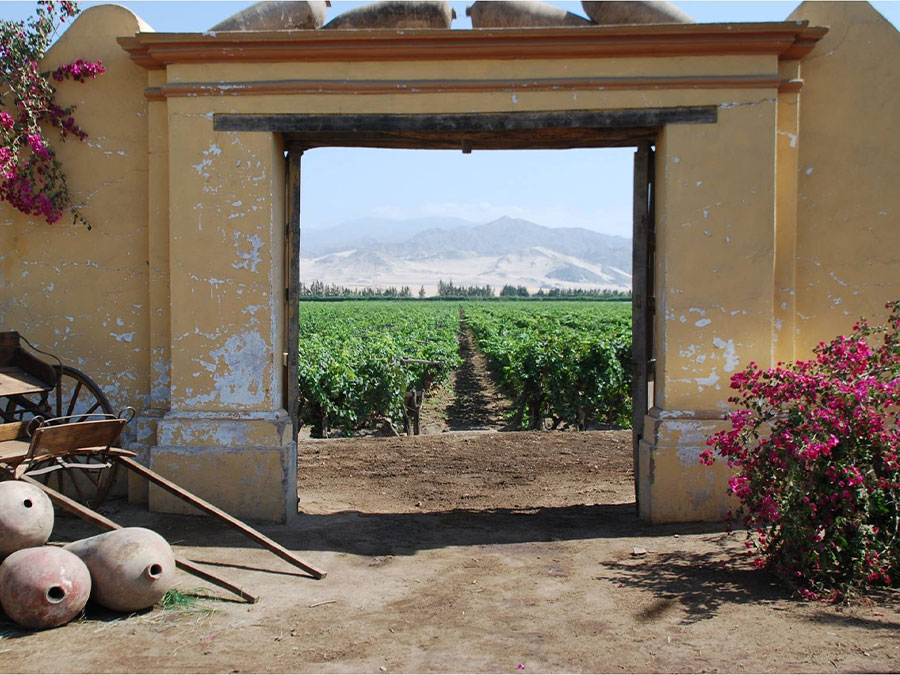

In 1532, Spanish conquistadors brought grape vines from the Canary Islands to Peru. Local wine production increased until 1641 when Spain’s King Philip IV prohibited the import of Peruvian wine to protect the Spanish wine market. The burgeoning Peruvian wine industry began to distill its excess production, and Pisco was born.
By the time Spain lifted its ban on imports from Peru in 1879, Pisco had become the country’s most popular drink. Today, it is considered Peru’s national spirit and the country’s national drink is the Pisco Sour—a cocktail mixed with lime, simple syrup, egg white and topped with Angostura bitters.
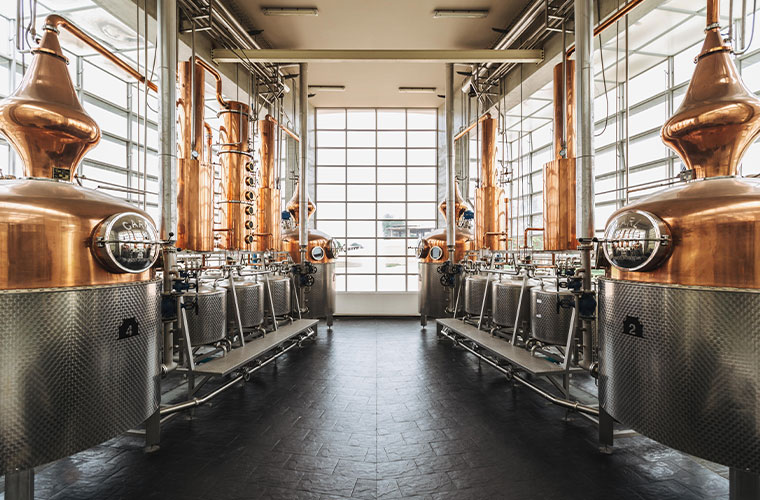

In 1991, the Peruvian government granted a Denomination of Origen (DO) for Pisco and established regulations to define it. Grapes used for Pisco must be grown in one of five departments of Lima, Ica, Arequipa, Moquegua and Tacna from eight designated grape varieties: quebranta, mollar, negra criolla, uvina, italia, moscatel, torontel and albilla. Pisco is distilled only once, in a copper alembic still, to between 38 and 48 percent alcohol and aged for at least three months in stainless steel, glass or traditional botijas. The regulations are different in Chile, where pisco can be distilled more than once and aged in oak. Peruvian pisqueros claim their techniques help to preserve the natural essence of the grape varieties they are using. To further preserve natural flavors, water, sugar or other additives are not allowed in production.
There are three styles of Peruvian Pisco: Puros are made solely from one grape variety and distilled from wine that has been fermented to dryness. Acholados are blends of two or more grape varieties. And Mosto Verdes are distilled from partially fermented must. Since fermentation has been halted, there is residual sugar left in the wine; by distilling this residual sugar, distillers claim to gain a smoother, silkier body and extra flavors, like sweet toast and honey.
To consider the differences in Pisco Puros from different grape varieties, I gathered a panel of bartenders and mixologists in Los Angeles to taste through twenty-six Piscos representing each style and variety. We broke out the eight authorized varieties into two categories, aromatic and non-aromatic.
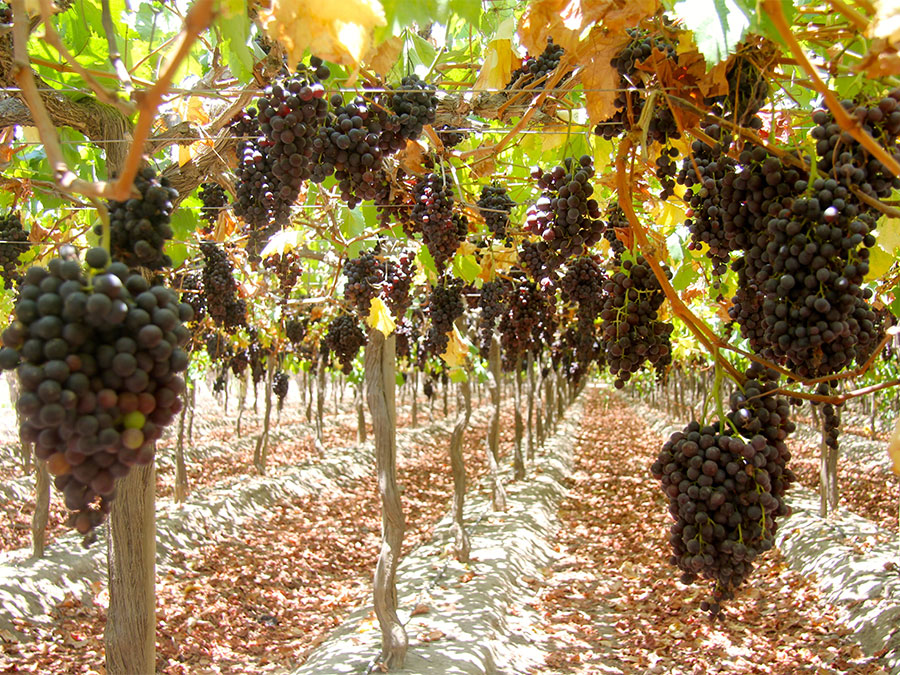

NON-AROMATIC
Quebranta:
This is the grape most often used in Pisco production. A crossing of mollar and negra criolla, Peruvians claim it as their only indigenous grape variety. The color of the grapes ranges from pink to deep purple; its flavors can range from orange peel to almonds, black pepper and soft salinty. It mixes perfectly into a Pisco Sour and is the variety most found on cocktail menus. This grape is produced more than any other, and we found a large variation of styles, from lifted and light bodied to concentrated and rich.
Mollar:
Called negramoll in the Canary Islands, this red-skinned grape makes a rich, full-bodied Pisco with flavors of red currant, pink-peppercorn and cocoa nibs. We loved its distinct, complex flavors—and though this is a less-common Puro Pisco, with relatively few plantings today, it is worth seeking out.
Negra Criolla:
This is called Listán Prieto in the Canary Islands and one of the parents of quebranta. A red-skinned variety, this offers red cherry, red apple and purple floral scents. The red-fruit flavors can be spritely, with undercurrents of spice.
Uvina:
The only hybrid grape variety permitted in Pisco production, this is a purple tintorera (red-fleshed) cross between an unknown Vitis aestivalis vine and unknown Vitis vinifera. Uvina is the only grape whose production is confined to three districts within Lima’s province of Cañete: Lunahuná, Pacarán and Zúñiga. It’s similar to quebranta but more neutral on the nose and palate. It carries a slightly green component, like cucumbers and green olives.
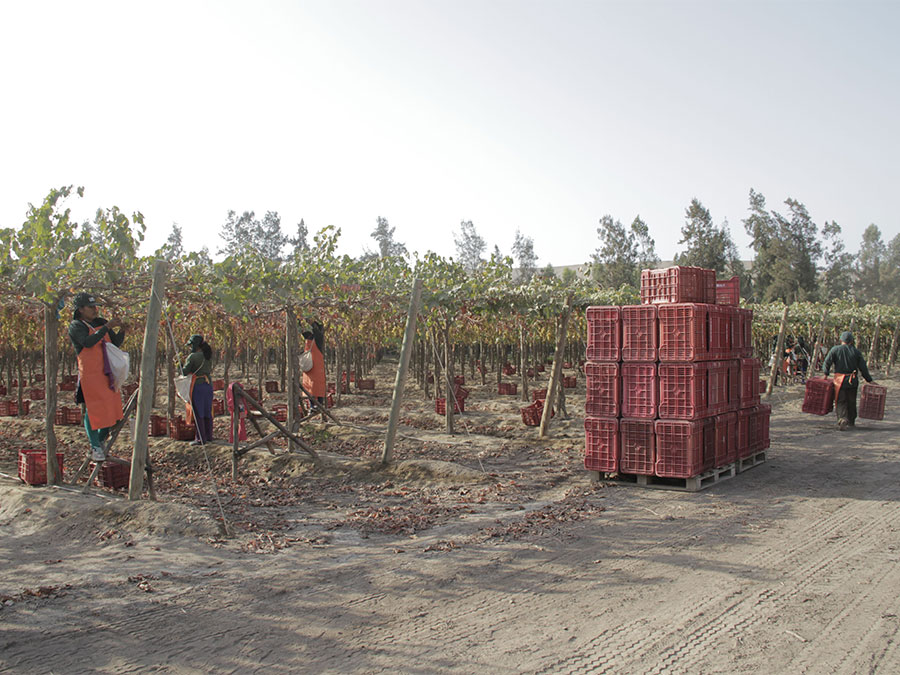

AROMATIC
Italia:
An intensely aromatic variety, this is a crossing of vinifera grapes bicane and muscat d’Hamburg. Very floral and stone-fruited, this style of pisco is often used in another Peruvian cocktail favorite: the Chilcano, a mixture of pisco, lime and ginger ale. Bright and summery, it can also be mixed with fruit juices or into a spritz.
Torontel:
Another intensely aromatic variety, this is a descendant of Criolla. It has floral scents along with tropical and stone fruit flavors in a rich mouthfeel.
Albilla:
Known as Listán Blanco in the Canary Islands and Palomino Fino in Andalusia, albilla grows in small bunches and tends to be less aromatic than italia and torontel. It carries delicate tropical fruit aromas of mango with undertones of pear and lime.
Moscatel:
From a Muscat family mutation distinct to Peru, this is less showy in its aromatics than italia or torontel. More pear and honeysuckle than tropical and perfumed, it’s for the Pisco drinker who wants just a touch of florals.
TASTING NOTES
Below are tasting notes for some of the discoveries we’ve made in our tastings broken into grape variety and style. A one jigger score represents a good example of the style; two-jigger Piscos are above average, and Piscos awarded three jiggers are exceptional in their standout flavors, texture and energy.
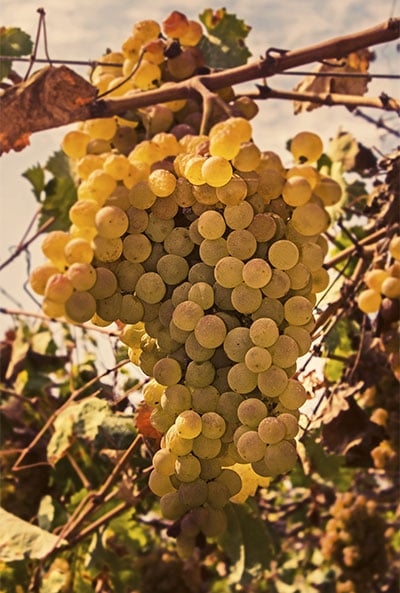

ALBILLA










Demonio de los Andes Pisco Albilla $25
One of the earliest grapes to arrive in Peru from Spain, albilla has been genetically identified as Listán Blanco from the Canary Islands, (in Andalucia, it is called Palomino Fino). This Pisco carries subtle aromas of mango, limeade and white grape juice. On the palate the mango fruit persists along with a pleasant candied-sugar quality reminiscent of agave. It feels warm, tropical and lush, with a smooth, long finish. Enjoy it like a Tequila: over a large cube of ice with a twist of lime.
Ebros Import Corp., Valley Stream, NY
ITALIA










Pisco Puro Italia $43
This springs from the glass with the scents of a summer garden: Rose petals, orange and cherry blossoms mingle with exotic litchi and black pepper—a gewürztraminer-lover’s Pisco. The body is pillowy and lifted, great for a floral Pisco Sour. It can also be mixed with fresh-squeezed grapefruit juice and mint for a twist on a mojito.
Preiss Imports, Ramona, CA









Pisco Puro Italia $60
Made from the aromatic italia grape, this Pisco has some floral qualities—vanilla blossom and juniper—but leads with rosemary, spearmint and green bell pepper. Danielle Motor of Sunset Boulevardier said, “its herbaceous nature makes it a great gin alternative.” It has a zippy energy and finishes with lemon and lime citrus for a pop of brightness.
Unidos Imports, LLC, Orlando, FL




Pisco Italia $45
Pisco Logía offers select bottlings that highlight growers and producers throughout Peru. This small-batch Pisco, from the vineyards of Alfredo Paino in the Mala Valley, is distilled by Hugo Chumpitaz at the Monte Carmelo bodega in Azpitia, Peru. The spirit greets you with scents of yellow roses and Meyer lemon and carries a weighty viscosity, lush and round in the mouth, like lemon cake sprinkled with powdered sugar. Try it in a Pisco Sour with lemon juice rather than lime.
Topa Spirits, LLC, Spokane, WA


MOLLAR










Pisco Mollar $55
Mollar, known as negramoll in the Canary Islands, is a red-skinned grape variety allowed in Pisco production, and this one is a showstopper. This is pressed, vinified and distilled by distiller Nati Gordillo, based in Azpitia, Peru. Distinctly red-fruited, it has scents of red currant, cranberry and spice—71 Above’s India Mandlekern called it “Christmassy.” There is a touch of cocoa on the palate mingling with fresh honeydew melon. The body is full and savory while maintaining a lifted energy; one of the most complex Piscos of the tasting.
Topa Spirits, Spokane, WA
MOSCATEL




Pisco Puro Moscatel $43
This feels warm and rich with hints of orange oil and lemon. There is a whisper of honeysuckle, white grape and pear but it’s relatively neutral for a Pisco from an aromatic grape variety. Still, the body is crisp and delicate—its smooth, neutral quality makes it great for a Pisco Sour or cocktail mixer.
Preiss Imports, Ramona, CA
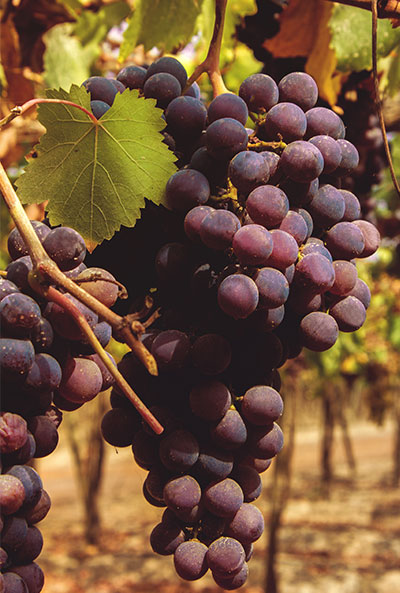

NEGRA CRIOLLA









Pisco Puro Negra Criolla $43
This Pisco, made from red-skinned negra criolla, is bursting with bright cherry, red apple blossom and violet florals. It has an undercurrent of spice, like the kind found in mulled wine, and the fruit goes from fresh to stewed on the palate. One taster called it a “winter Pisco” because of these flavors, but there’s a tension between fresh and stewed that creates exciting energy.
Preiss Imports, Ramona, CA
TORONTEL










Puro Torontel $37
Founder and Master Distiller Diego Loret de Mola works with torontel wine from the southern valley of Ica to create this Puro Pisco. Extremely aromatic with white flowers, jasmine and lemongrass scents over ripe peach and dried apricot flavors, it’s a sensuous Pisco. Energetic and summery, this would be great mixed with soda or tonic, served over ice with a twist of lemon.
Hotaling & Co., San Francisco, CA
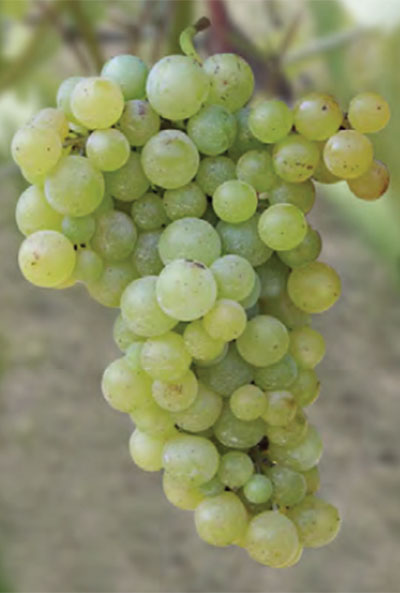











Pisco Torontel $45
Master distiller and blender Nati Gordillo worked with her husband to transform a small, sandy plot of land on the hills of Azpitia in Peru’s Mala Valley into a Pisco vineyard. This torontel is bright and energetic, its flavors of tropical mango peel finishing with a savory salinity. While aromatic, it feels balanced, sprightly and springy on the tongue.
Topa Spirits LLC, Spokane, WA









Pisco Puro Torontel $43
Full of floral white musk and dried potpourri on the nose, this Pisco feels light and lifted in its flavors of orange peel and green pear. Mixologist Danielle Motor of Sunset Boulevardier said it reminded her of Poire Williams; she would mix it with grapefruit juice for a twist on a Greyhound cocktail or use it in a spritz with Dolin Blanc vermouth.
Preiss Imports, Ramona, CA




Puro Torontel $40
Full of florals, from iris and dried roses, this Pisco has a savory quality of rhubarb root and white pepper, carrying through on the long finish. Torontel is a different grape variety than torrontes in Argentina, yet it has a similar “grandma’s perfume” quality that makes you wonder if the two were related. This one maintains a cool, airy freshness, like sea breeze.
Pisco Portón, Houston, TX


QUEBRANTA










Pisco Puro Quebranta $43
Located 133 miles south of Lima, in El Carmen, Chincha en Ica, Viñas de Oro farms close to 2,000 acres of six Pisco grapes. Quebranta, considered a non-aromatic variety, is used most often for Peru’s signature drink, the Pisco sour. But in our tastings, Viñas de Oro Pisco Puro Quebranta proved to be anything but ordinary. Bright, fresh and complex, the body is silky-smooth and pillowy while flavors of lime and red currant meld with the scent of a sea breeze, lingering in the end.
Preiss Imports, Ramona, CA
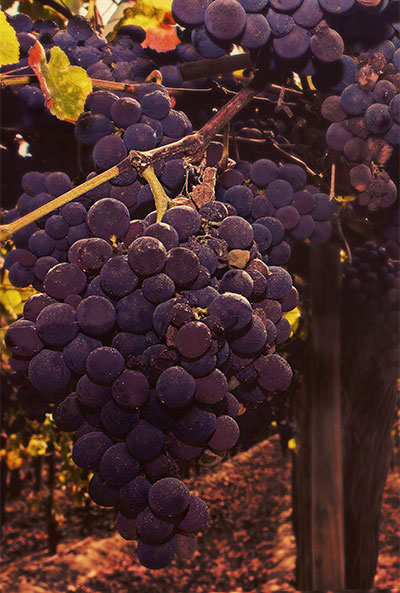










Quebranta Pisco $36
The Capurro family has been farming for over 100 years through five generations. They work without chemicals, using organic and biodynamic practices, hand harvesting their grapes and fermenting them without additions. This Quebranta is a clean, distinctly spicy Pisco with cracked black pepper leading the charge. Its undertones of jasmine and orange oil are carried by a spritely, youthful energy.
Romina Foods, San Mateo, CA









Quebranta Pisco $40
Pisco Ku is 133 miles south of Lima, in the district of El Carmen, Chincha in Ica. The property has just under 200 acres dedicated to six different Pisco grapes. Their quebranta smells sweet on the nose, full of orange blossom, green apple and almond skins. It’s powdery soft and elegant in the mouth, the sweet almond flavor carrying through to the finish.
Preiss Imports, Ramona, CA









Puro Quebranta $27
Full of blueberry, violet and sugar plum flavors, this Pisco is concentrated and flavorful. It may not be as spritely or racy as other examples of quebranta in our tastings, but it has an interesting complexity—smoked black licorice meeting grape bubblegum in the best way.
Hotaling & Co., San Francisco, CA
UVINA










Pisco Puro Uvina $35
Uvina is a non-aromatic grape variety; this one is from Lunahuaná, a small town in the Cañete Province of Peru. Clean and fresh, it has a salinity accompanied by cucumber and mint. It’s well balanced with a touch of white pepper spice on the finish. Confident and unassuming, it makes a crisp Pisco Sour.
Tierra Nueva, Lunahuaná, Peru
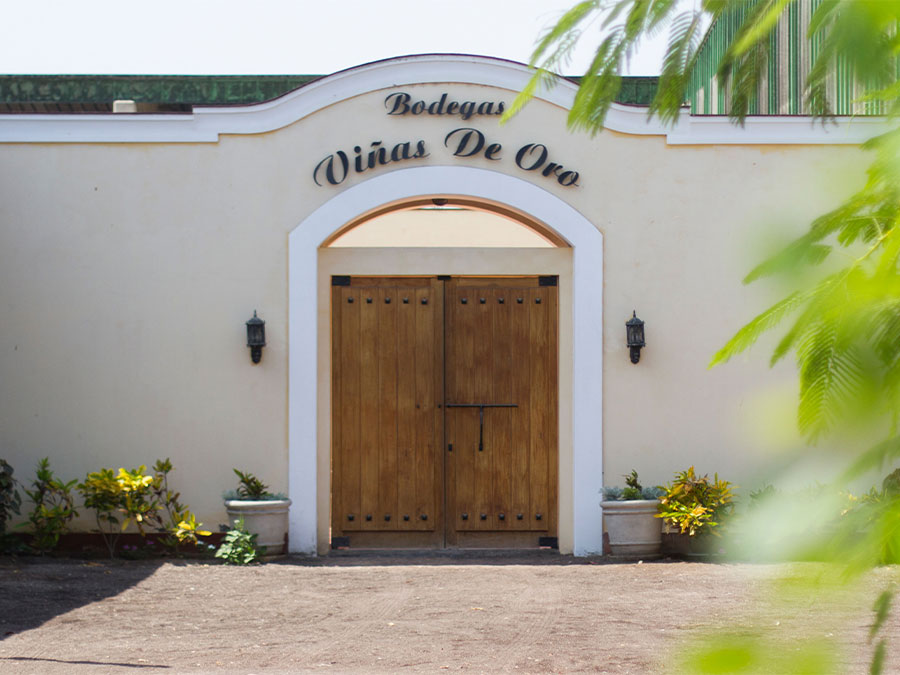

PISCO ACHOLADO










Pisco Acholado $43
Acholado means blend; this is 50 percent quebranta and 50 percent italia, creating a seamless balance between the aromatic and non-aromatic varieties. This Pisco’s delicate perfume of sweet mango and hibiscus bounds from the glass, providing satisfaction in the scent alone. The palate oscillates between bright yellow rose and earthy tree bark, heading into springy salinity balancing coriander spice. This is an elevated pisco with gorgeous tension and a silky-smooth finish.
Preiss Imports, Ramona, CA









Acholado Premium Pisco $36
This blend is a Capurro family secret recipe—they pot distill each grape individually before blending them together to create balance between aromatics and texture. It intrigues with its pillowy mouthfeel and complex flavors—cocoa nibs, candied pear and fresh cut grass. It’s savory and a little bit smoky sweet, like BBQ-roasted summer peaches.
Romina Foods, San Mateo, CA
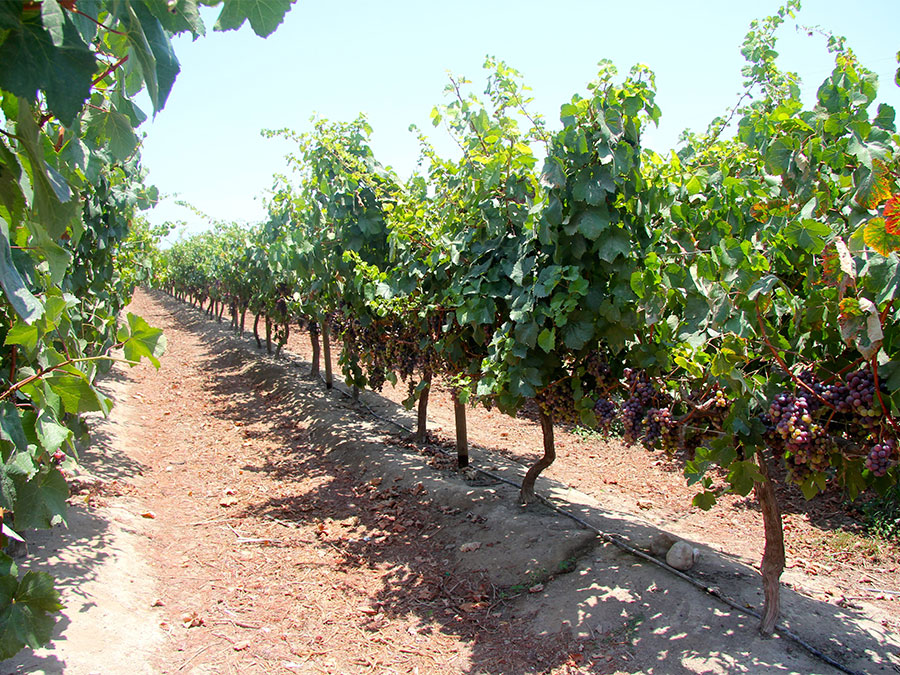

MOSTO VERDE










Moste Verde Italia $42
Mosto Verde is made from musts that aren’t fully fermented, often resulting in more aromatic Piscos emphasizing a silky texture. This spritely Pisco is full of coriander, gentian root, spearmint and green bell pepper. It glides through the mouth effortlessly, finishing with green melon and honey. Elegant enough to sip on its own, it could also make a great Martini.
Hotaling & Co., San Francisco, CA









Mosto Verde $50
Established in 1684, Caravedo is the oldest distillery in Peru, located in the Ica Valley. This Mosto Verde is their flagship Pisco, a blend of quebranta, torontel, italia and albilla, distilled in small batches before blending. It’s almost effervescent on the palate, where lifted notes of fresh cucumber play with sweet lemon citrus. Crisp, clean and effortlessly balanced.
Pisco Portón, Houston, TX
Based in Los Angeles, California, Alissa Bica is the Associate Editor and Spirits Critic at Wine & Spirits. She is also a sommelier at 71 Above and co-runs the home wine tasting company, Côte Brune and Blonde. In any rare moments of free time, she writes about obscure grape varieties in the blog Off the Beaten Wine Path.
This is a W&S web exclusive. Get access to all of our feature stories by signing up today.


















